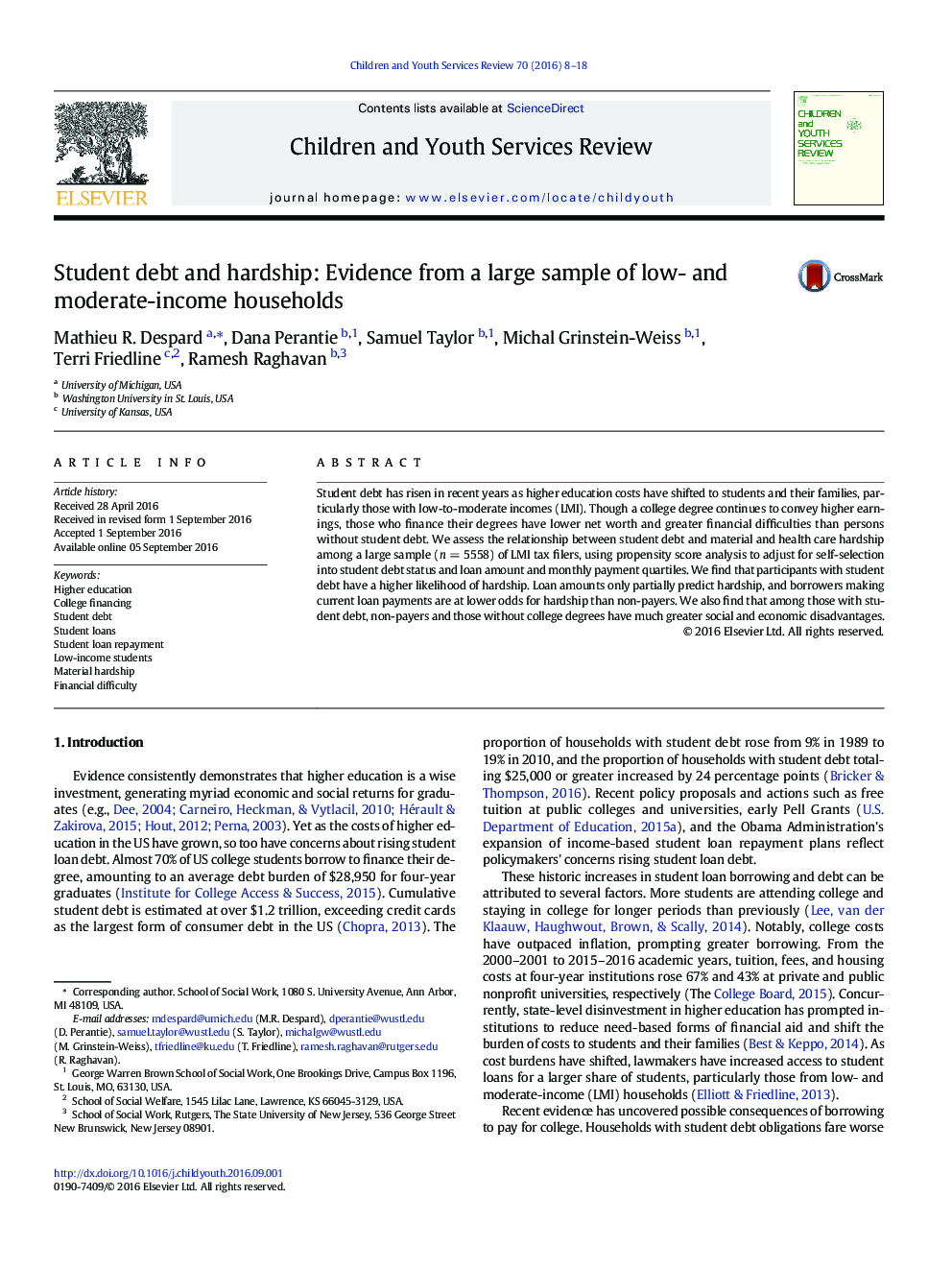| Article ID | Journal | Published Year | Pages | File Type |
|---|---|---|---|---|
| 4936615 | Children and Youth Services Review | 2016 | 11 Pages |
Abstract
Student debt has risen in recent years as higher education costs have shifted to students and their families, particularly those with low-to-moderate incomes (LMI). Though a college degree continues to convey higher earnings, those who finance their degrees have lower net worth and greater financial difficulties than persons without student debt. We assess the relationship between student debt and material and health care hardship among a large sample (n = 5558) of LMI tax filers, using propensity score analysis to adjust for self-selection into student debt status and loan amount and monthly payment quartiles. We find that participants with student debt have a higher likelihood of hardship. Loan amounts only partially predict hardship, and borrowers making current loan payments are at lower odds for hardship than non-payers. We also find that among those with student debt, non-payers and those without college degrees have much greater social and economic disadvantages.
Related Topics
Health Sciences
Medicine and Dentistry
Perinatology, Pediatrics and Child Health
Authors
Mathieu R. Despard, Dana Perantie, Samuel Taylor, Michal Grinstein-Weiss, Terri Friedline, Ramesh Raghavan,
